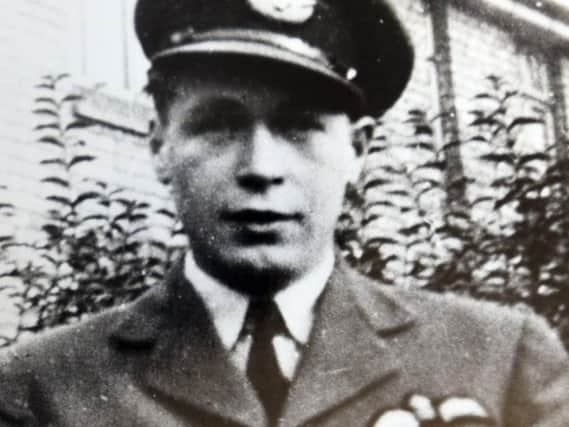Heroism of Wigan pilot murdered by Gestapo in World War Two recalled 75 years later


Ronald Walker was killed by the Nazis after his plane was brought to the ground over the Netherlands three quarters of a century ago, in 1944.
Other news: Wigan Council spends £4m in a year to keep borough cleanThe brave young man was on his 45th mission when it all went disastrously wrong on June 22 of that year, with the Wigan air ace the only member of the seven-man crew to survive the impact with the ground.
Advertisement
Hide AdAdvertisement
Hide AdHe evaded capture for several weeks, being shifted between safe houses due to the courageousness of the Dutch Resistance, but he eventually fell into enemy hands and was shot in the back by German gunmen while attempting to surrender.
Sadly he had been awarded the Distinguished Flying Cross for his exploits but it was his grieving family who went to Buckingham Palace to collect it.
His tragic story is now being remembered by John Eaborn, a surviving relative.
As a child visiting family in Wigan Mr Eaborn says he even recalls Ronald, who was at home on Thicknesse Avenue in Beech Hill while on leave from the forces during the Christmas period in 1943.
Advertisement
Hide AdAdvertisement
Hide AdMr Eaborn, 81, said: “Ronald signed up for the RAF and went to train in America before coming back.
“He was with the Pathfinder Squadron, which went to mark the targets.
“He was shot down on his 45th mission while they were going to bomb a factory which made ball bearings.
“After the crash the crew was recorded as six bodies and one missing, the latter being Ronald.
Advertisement
Hide AdAdvertisement
Hide Ad“He bailed out with no parachute and landed in some bushes, and he wasn’t injured badly.
“The Resistance found him and he ended up in Tilburg in Holland being sheltered with two other fighter pilots.
“Two more were supposed to join them but the Gestapo found out about them and came into the house.
“They were shot in the back yard.
“There was Ronald, a Canadian pilot and an Australian.
“He was a good pilot, the number of missions he flew was incredible. He was over Cherbourg on D-Day with 83 Squadron.
Advertisement
Hide AdAdvertisement
Hide Ad“I was in Wigan for D-Day. My grandma’s brother was Horace Walker and Ronald was his son. They lived on Thicknesse Avenue. I remember my uncle getting an incendiary in a trench to celebrate VE Day at the end of the war.
“Ronald was home for a couple of days over Christmas 1943. I would have been about five at the time. I remember seeing and meeting him.
“My impression was that he was a really kind guy. He was so young when he died, I think he was only about 22.”
After being found by the Dutch Resistance and moved around the country to avoid the attention of the Nazis, Ronald ended up in the home of Coba Pulskens, who was known by everyone involved in the secretive work as Aunt Coba. She defied the occupying Germans by hiding Jews and Allied airmen in her home, a decision which would prove to be fatal.
Advertisement
Hide AdAdvertisement
Hide AdIn a last act of defiance, when asked to find a blanket to cover the bodies in her home with, Aunt Coba produced a Dutch flag which she had kept hidden away ready for the country’s liberation.
She was taken away by the Nazis for her part in the Resistance and was killed in the Ravensbruck concentration camp. She was initially put to work but ended up in the gas chambers, taking the place of a missing prisoner who had been sentenced to death.
However, Ronald’s story did not end with his death either as his body was taken to a hospital in Eindhoven.
There a doctor was appalled by the gruesome sight he was presented with as the three discovered airmen between them had been shot more than 100 times in cold blood by the Nazis.
Advertisement
Hide AdAdvertisement
Hide AdHe secretly took pictures of Ronald’s bullet-filled remains and handed the images over to the authorities investigating Nazi brutality after the war.
Eventually some of the Gestapo men operating in that area were tried for war crimes and sentenced to be hung.
Ronald decided early on in the war that he wanted to be involved, volunteering himself for aircraft training on October 9, 1940, his 18th birthday. Sadly Ronald has no grave as his body was taken to the Vught concentration camp in a coffin and cremated, part of the Nazi efforts to cover up many of their inhuman acts.
However, a memorial has been created in Tilburg where the three airmen died and Mr Eaborn, who lives in Preston and has amassed a collection of memorabilia about Ronald, went to the continent a couple of years ago with his two sons to see it and lay flowers.
The Dutch flag used to cover his body hangs in the Airman’s Chapel in Lincolnshire.